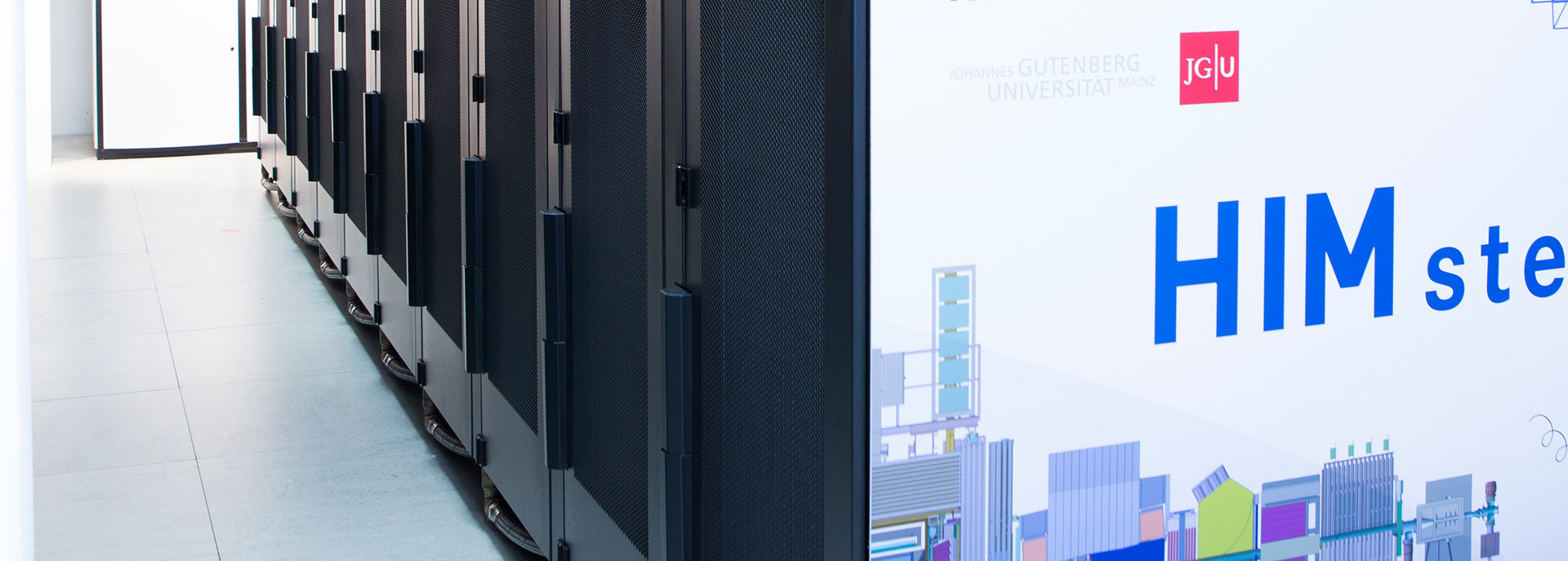Scientific Computing
The activities of the scientific computing department (SCD) are centered around two research areas.
High Performance Computing
High performance computing is increasingly important for the research conducted in physics in general and at the HIM in particular. In order to meet the computational demands of the various research groups the SCD currently operates and maintains three HPC clusters located at the adjacent Institute for Nuclear Physics (HIMster and Clover) and in the HIM research building itself (HIMsterII).
- Clover
320 nodes: Dual Socket Intel E5-2650 v2 8 Cores @ 2600 MHz
Cores: 5120
Filesystem: 600 Tbyte (FHGFS)
Cost: 1.2 M€ - HIMSter II
320 nodes: Dual Socket Intel Gold 6130 @ 2100 MHz
Cores: 10240
Filesystem: 1500 Tbyte (Lustre)
Cost: 1.9 M€
The SCD is not only responsible for the operation of the clusters but also actively supports users to improve their code performance and to run applications on large partitions. We provide courses for cluster usage and code optimization to help users of our clusters achieve maximum performance.
In addition, the SCD takes a leading role in adapting the lattice quantum chromodynamics (LQCD) code to various hardware technologies. Hardware-specific optimizations for the Blue Gene Q architecture can be found at http://hpc.desy.de/simlab/codes/openqcd_bgopt/.
Moreover the SCD significantly contributes to writing and maintaining the basic code, e.g. the interface to optimized solvers that are used for most calculations within the Mainz LQCD group.
On the hardware side we have developed a cost effective open source environmental sensor monitoring system. Details can be found at https://arxiv.org/abs/1802.00724 and schematics.
Computer Algebra System
In most applications of quantum field theory, the use of a computer algebra system (CAS) greatly simplifies the often tedious and error-prone calculations.
One particular example of a standard but error-prone task is performing Wick contractions in the calculation of correlation matrices in LQCD. To this end we have developed a Mathematica package that performs the Wick contractions and generates C++ source code, which seamlessly integrates in the Mainz LQCD measurement package. For more details we refer to https://arxiv.org/abs/1603.01576
In the context of effective field theories (EFT) we have implemented several applications/packages, such as
- derivation of Feynman rules in EFT (Form routines). A particular application was used in 10.1088/0253-6102/69/3/263,
- calculation of divergent parts of one loop integrals (Mathematica package), used in 10.1016/j.physletb.2018.09.016, 10.1016/j.physletb.2018.11.044
- interface of LoopTools with numpy (Python bindings using Cython), used in 10.1142/S0217751X1950009X.
Currently we are working on a standard Mathematica analysis package, suitable for any type of time series data. Of particular interest is a fast read-in method of structured data in HDF5 format, which will be implemented as a MathLink library.
Most of our applications have been or will be provided as open source.
Dr. Dalibor Djukanovic

Helmholtz Institute Mainz
Staudingerweg 18
D-55128 Mainz
Room: 03-121
E-Mail: d.djukanovic(at)him.uni-mainz.de
Phone: +49 6131 39-29604
